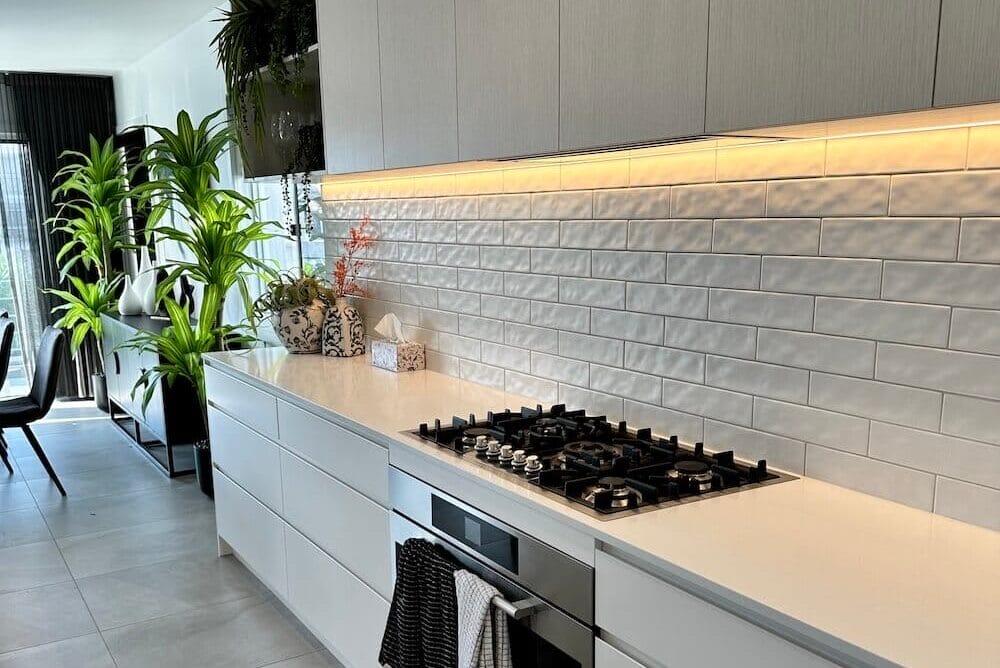Kitchen cabinets are hotspots for all sorts of messes: spilled sauces, food crumbs, and for the cabinets above your stove, grease!
It’s easy to overlook the cabinets over your stovetop when cleaning, especially the underside. But airborne grease particles and cooking splatter can leave residue that builds up over time.
An oily cabinet doesn’t just look bad – it can lead to mould or a fire risk. Some ways to remove grease from kitchen cabinets include:
Use a little elbow grease to clean kitchen cabinet grease! That way, you can continue cooking stir-fries or chicken wings in peace.
Tips for Different Cabinet Materials | Before Cleaning | How to Clean Grease | Cleaning Sticky Grease | Tips to Minimise Grease
How Often to Clean Kitchen Cabinets Over the Stove
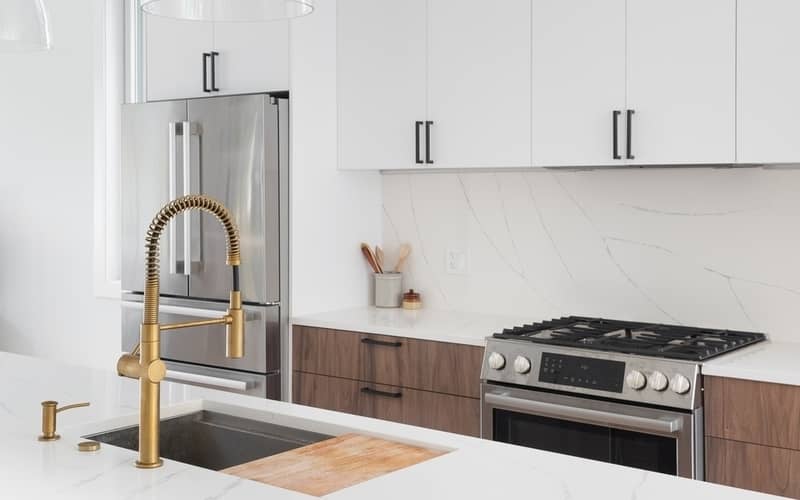
You should routinely clean kitchen cabinets above the stove once a week.
To help minimise grease build-up, wipe splatters and other messes immediately. Use a soft cloth and an everyday cleaner.
Spot clean over-the-stove cabinets throughout the week.
Degreasing Different Cabinet Materials
When it comes to cleaning kitchen cabinets, a lot depends on the type of material!
Some cleaning agents may not be compatible with certain materials.
For example, you shouldn’t use vinegar to clean wooden cabinets since it can discolour or damage the finish.
Laminate cabinets
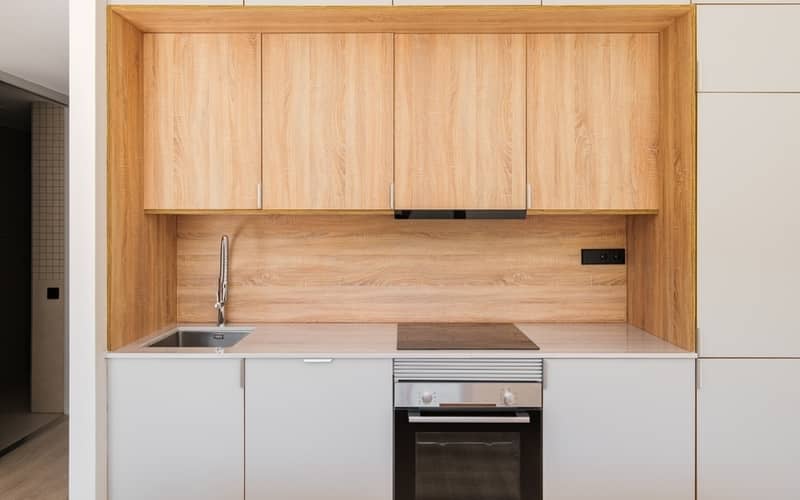
When cleaning laminate cabinets, avoid oil-based cleaners as these can leave a residue or film on the surfaces.
Do not use abrasive cleaners or ones with bleach or ammonia, which can damage the material.
Metal cabinets
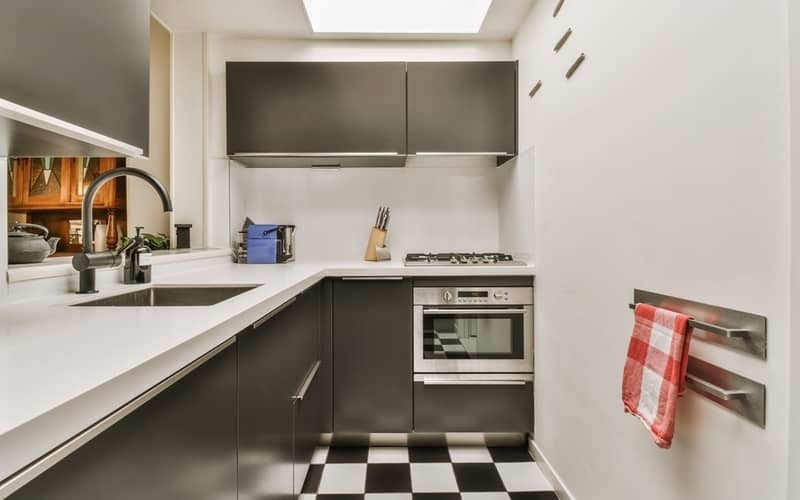
It’s essential to know the type of metal, such as stainless steel or aluminium. This lets you choose the appropriate cleaning solution.
Avoid abrasive cleaners since they can scuff or scratch the metal surface.
Painted cabinets
Check with the cabinet manufacturer about the type of paint used on your cabinets, and how the paint was sealed or cured. Then choose an appropriate cleaning agent.
Apply the cleaner onto a microfibre cloth instead of directly onto the painted surface to minimise moisture.
Polyurethane cabinets
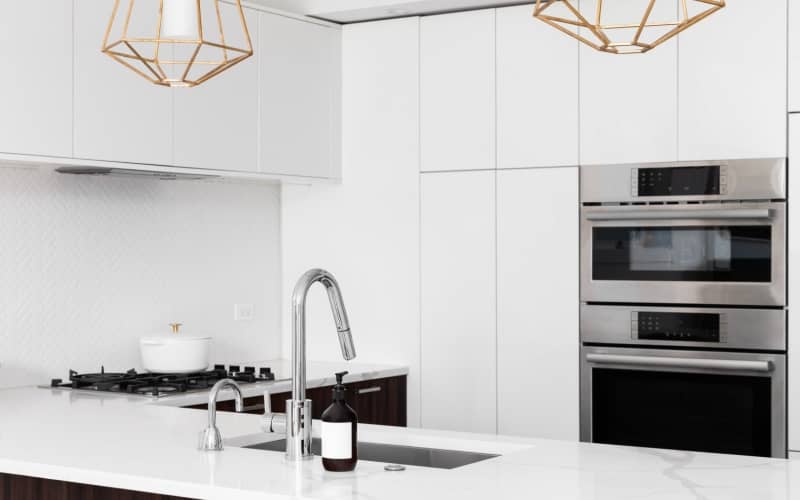
Polyurethane finishes on cabinets can be pretty forgiving, so you can use most cleaners unless otherwise stated by the manufacturer.
Opt for soft cloths so you don’t leave streaks or smudges on the surface.
Wood cabinets
How you clean greasy wood cabinets will depend on the finish of the material!
Unsealed wood should be cleaned with minimal moisture to prevent mould or warping.
For a sealed wood surface, check with the manufacturer for the appropriate cleaning solution. Some sealants or finishes may be damaged by certain substances.
Before Cleaning Greasy Cabinets Above the Stove
You’ll need to protect your stovetop before you start cleaning the cabinets above it!
This keeps any residue from your chosen cleaner from dripping onto the stovetop, which could damage the cooking surface or create a fire risk.
Layer some old towels or newspapers over the stovetop and benchtop. Alternatively, if your stove has a cover, pull it down or put it over the stove.
Test your chosen cabinet cleaning solution first on an inconspicuous spot. That way, you can check for damage or other adverse reactions.
When cleaning, don’t just focus on the undersides of the cabinets! Remember to degrease the cabinet doors, handles, and frames, since grime can collect there too.
How to Clean Grease Off Kitchen Cabinets Above the Stove
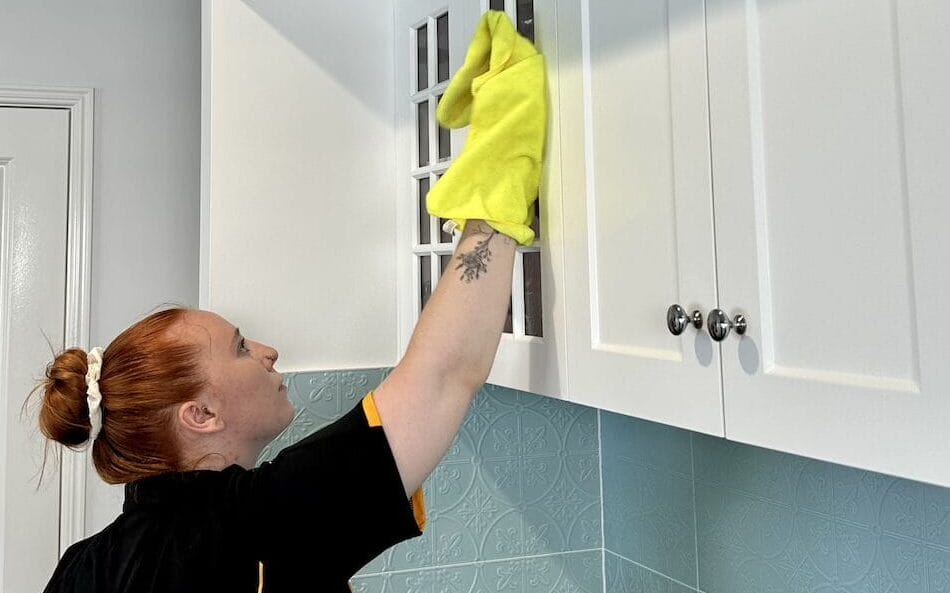
We asked our pro home cleaners for their favourite ways to clean greasy kitchen cabinets!
Some methods work best for routine cleaning, while others can tackle stuck-on grease or stubborn stains.
Cleaning with vinegar
Vinegar works best for laminate cabinets and other durable surfaces. It’s not the most effective solution, but can tackle mild grease or everyday cleaning.
(If you don’t like the vinegar scent, you can sub it with diluted lemon juice!)
Pour some distilled white vinegar into a spray bottle. You can add a few drops of dish soap for extra cleaning power.
Apply the vinegar solution directly to the grease stains on the kitchen cabinets. Wait a few seconds, then wipe the surfaces clean with a clean, damp cloth.
Follow with a dry cloth to remove any remaining moisture.
NOTE: Avoid using this on wood as white vinegar’s acidity can etch or discolour the material.
Cleaning with multi-purpose cleaner
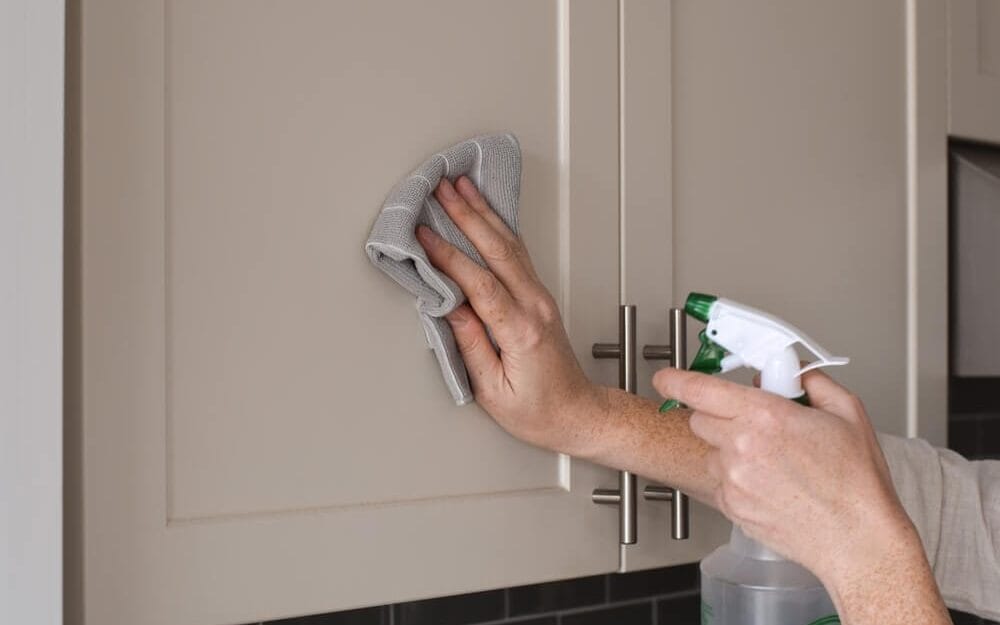
Your regular multi-purpose cleaner will do the trick, but if you can, look for one with citrus oil! Orange Squirt and Sonett Orange Power Cleaner are crowd favourites.
Citrus is a natural degreaser, so these products can cut through the grease and grime on kitchen cabinets.
Follow the instructions for applying the product to the greasy cabinets. Use a sponge or cloth dipped in warm water to gently scrub off the grime.
With a fresh, damp cloth, wipe off any residue from the cabinet surfaces. Thoroughly dry the cabinet surfaces afterwards.
NOTE: Avoid using oil-based cleaners on materials like glass or laminate, since they can leave a residue.
Cleaning with dish soap
This method requires a bit more effort, but works on most cabinet surfaces. Use anti-grease dishwashing liquid like Dawn Dish Soap.
Mix a few drops of dish soap with warm water. Dip a soft cloth or sponge into the mixture, then wring it out so it’s damp, not wet.
Use a cloth or sponge to scrub off and remove grease stains from the cabinets. You may need to wipe off the dirty water and residue, then scrub some more to get all the grease off.
Follow with a clean, damp cloth to remove any soap residue. Fully dry the cabinets with a fresh cloth.
You can also mix the soap and water in a spray bottle for easier application, especially on the undersides of kitchen cabinets.
For very tough grease stains, go for Dawn Platinum Powerwash. It doesn’t need water to activate – just spray it on, then wipe cabinets clean!
NOTE: For wood cabinets, some cleaners swear by Murphy Oil Soap. Make sure to dilute it and wipe off any residue afterwards.
Cleaning with a degreaser
Degreasers are much stronger cleaning solutions, so use them on kitchen cabinets with care! Wear protective gear like rubber gloves and work in a well-ventilated room.
Look for kitchen degreasers like Easy-Off Cleaner Degreaser or Ajax Professional Kitchen Degreaser. Check to make sure the product is compatible with your cabinet material.
Follow the instructions for applying the degreaser to your dirty cabinets. Some products like Ajax Degreaser have upside-down triggers and clingy formulas for hard-to-reach places.
Use a damp cloth to wipe off any product residue, then a clean cloth to dry the cabinets.
NOTE: If you want a really strong solution, look for an ammonia-based degreaser. Ensure you work in a well-ventilated room and wear protective equipment while cleaning.
Cleaning with sugar soap
Yes, you can use sugar soap for cleaning greasy kitchen cabinets!
Sugar soap comes as a concentrate, so you’ll have to dilute it before use. But this heavy-duty cleaner easily dissolves grease on dirty cabinets.
Prepare the sugar soap solution according to the packaging. Make sure to wear rubber gloves, since the product can cause skin irritation or dryness.
Dip a non-abrasive sponge or cloth into the sugar soap mixture, then wring it out so it’s just damp. Work in small, circular motions as you scrub the greasy cabinets clean.
For very stubborn grease, let the solution sit for a minute or two to break down the residue.
Rinse the kitchen cabinets with a damp cloth, then thoroughly dry all the surfaces.
How to Clean Sticky Grease Off Kitchen Cabinets
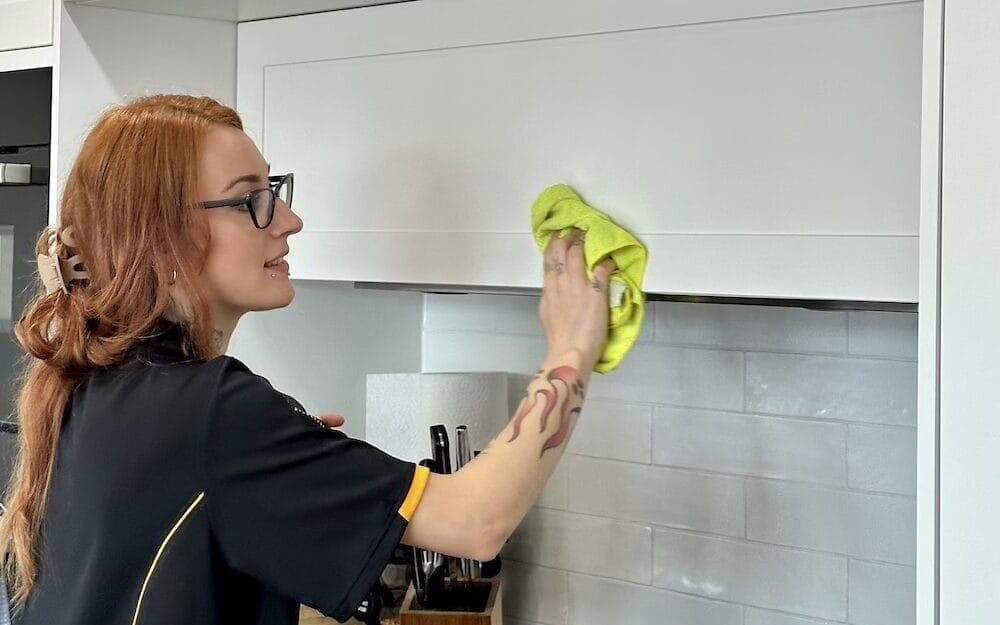
For sticky or dried residue on a greasy cabinet, you’ll need to take a different approach!
Both cleaning methods use a soft cloth or sponge, but for extra-stubborn grease, you can try a cooktop scraper. Use it at an angle so you don’t scratch the cabinet finish.
Using baking soda
This can get a bit messy, but baking soda is great for absorbing grease and other oily residue on kitchen cabinets around your stove.
Plus, it’s only mildly abrasive, so it can gently scrub off grease without scuffing a surface.
Make a thick paste out of castile liquid soap, baking soda, and water. The castile soap helps make the paste thick so it can adhere to cabinet doors and other tricky surfaces.
Apply the paste to the dirty cabinets with a damp sponge. Wait 5-10 minutes, then use a non-abrasive sponge to scrub the surfaces clean.
Using cooking or mineral oil
It may feel contradictory to use oil to remove sticky grease, but don’t knock this method! It works best for dried or old grease stains on kitchen cabinets.
Use a soft sponge to apply a thin layer of oil onto the stained area of your cabinet. Opt for a food-safe oil (like olive or canola) or a mineral oil (works best on wood).
Wait a few minutes while the oil “rehydrates” and breaks down the old grease stains on the cabinet. Then wash off the sticky grease with a soft cloth, warm water, and mild dish soap.
Follow with a damp sponge to wipe off any residue. Dry the cabinet surfaces afterwards.
Tips for Keeping Grease Stains Off Kitchen Cabinets
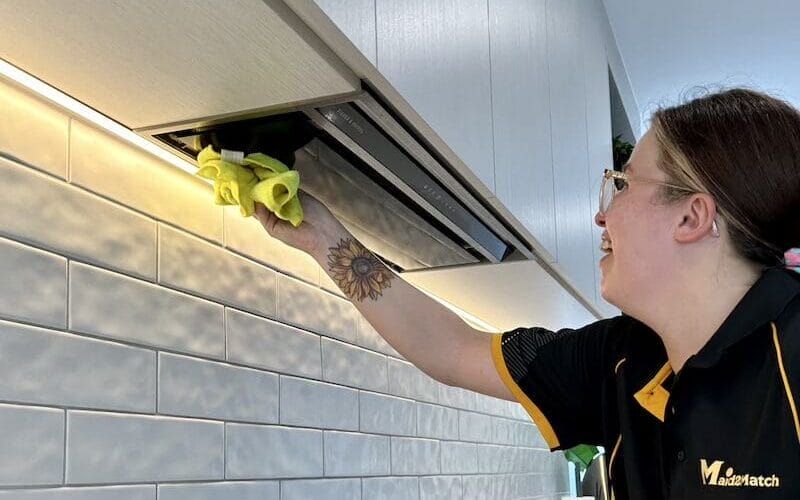
Use lids or a splatter screen while cooking, especially if you’re deep frying food. These catch grease splatter and airborne particles so there’s less of a mess.
Routinely wipe the cabinets near or above the stove to minimise grease build-up. That means you don’t have to deep clean as frequently.
Regularly clean your rangehood to keep it in good working condition. The rangehood helps absorb airborne grease as well as other debris.
And of course, tackle any big splatters or messes ASAP. Wiping cabinets clean now means less scrubbing later on – and less grease on your kitchen cabinets overall.

